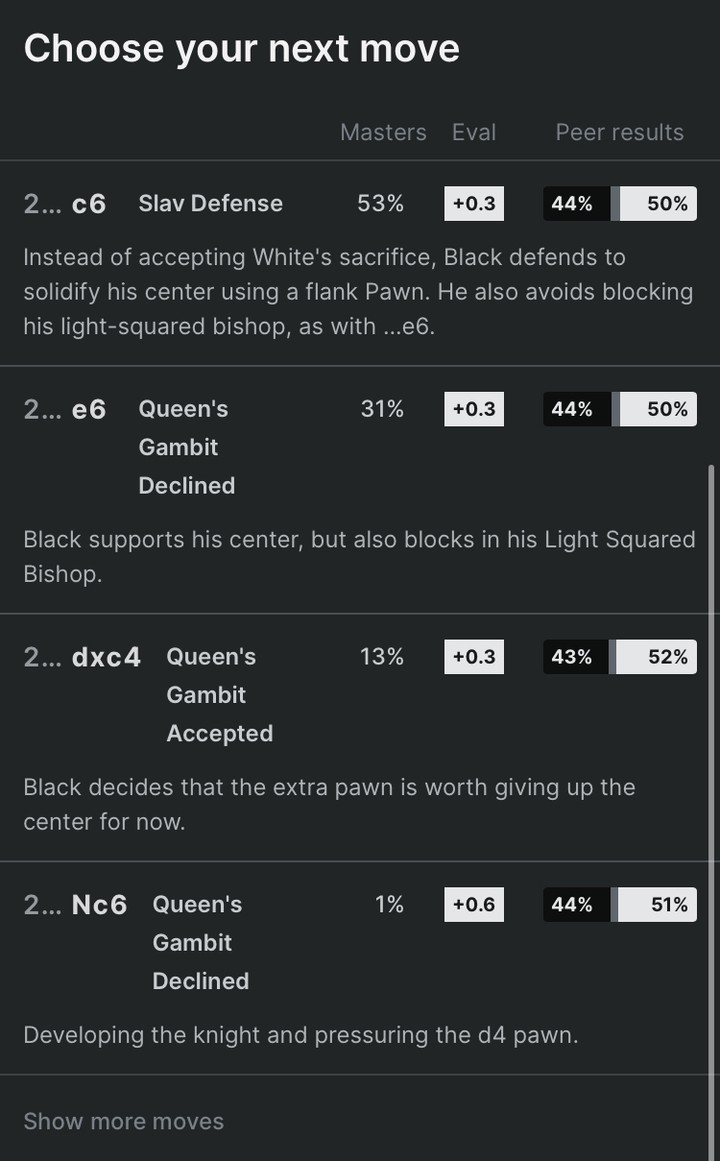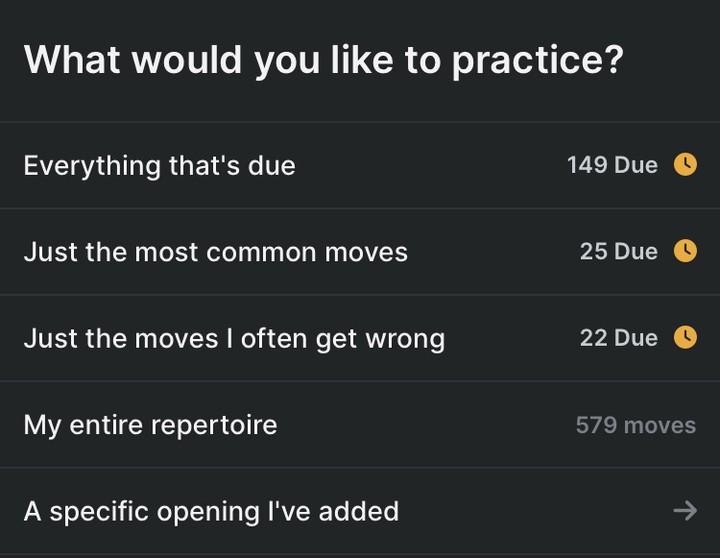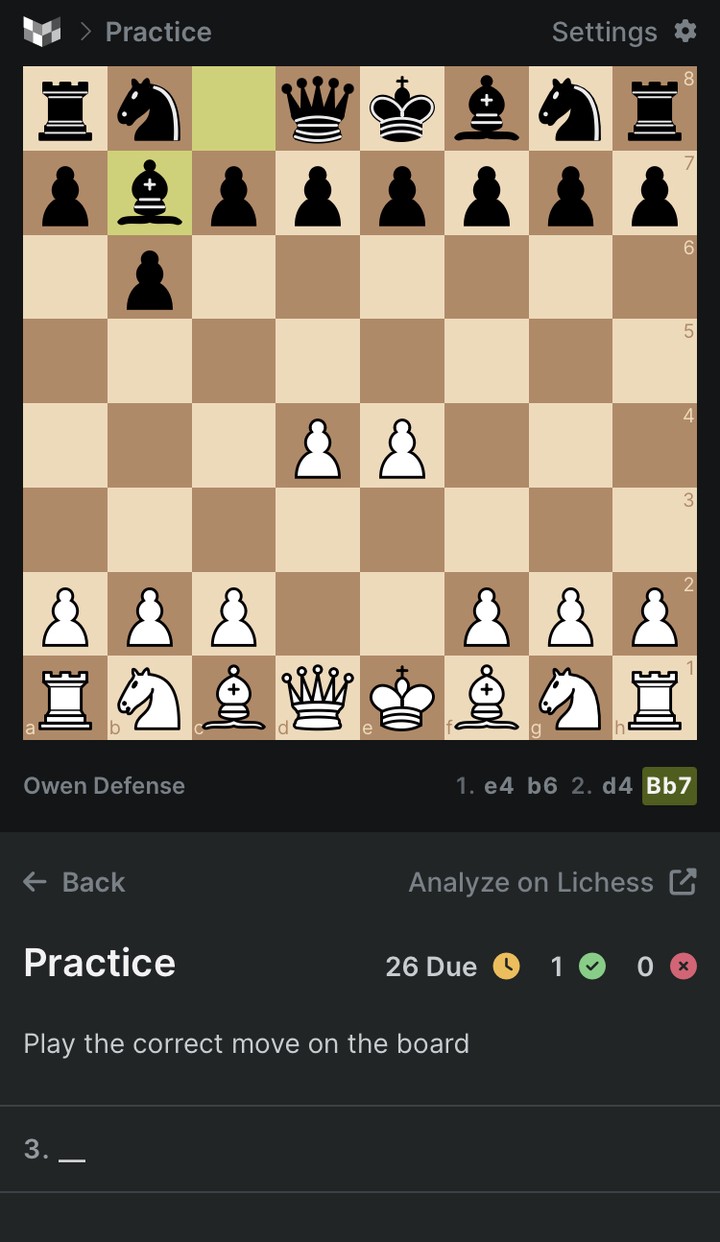
ChessBook app review
ChessBook - a tool for repertoire buildingIntroduction
Last year I read somewhere about a statistical approach to opening repertoire building. This is the idea that some of you may not like, but it goes like this. You take a bunch of games played by people with your rating, and then just try to choose the moves that score best. Often enough the lines that pose practical problems to your typical opponents score quite well, even if the theory considers them to be harmless in top level play. Then you go down the lines and learn the moves, maybe working with the engine or a stronger friend/coach to figure out the ideas behind the moves you don’t understand. And eventually, after some spaced-repetition practice, you’ll have a repertoire that is statistically supposed to perform well (or at least better than average).
Of course, many people are against this whole approach, because it’s widely considered more important to understand the ideas behind a particular opening or setup rather than exact move sequences.
It’s a fair point and I agree with it, but I think we can still use the statistical approach to guide our repertoire choices while learning and evaluating ideas — basically combining the best of two worlds. After all, in many opening books authors provide scoring statistics for their variations — the only problem is that it’s usually based on master games.
Another useful “statistical” idea is that you should focus your preparation on the openings that happen more often at your level. If some variation has a chance of 1 in 10,000 to be played in your game that it doesn’t make much sense to memorise the moves up to that point, it’s better to save effort for something else. So it’s useful to have information about moves popularity at your level to guide the preparation.
So what does this have to do with ChessBook? It’s a tool for creating and practicing opening repertoires which makes the approach described above easy. It provides spaced-repetition review and performance scoring of the moves based on Lichess data for your level. It also provides precalculated computer evals and scoring from master games. Note that the tool is generic and is not limited to this particular approach, you can create and train any repertoire there, be it from a book or based on your coach’s advice.
In this post I want to quickly show the main features of ChessBook and then describe my experience of using it along with points that I like and that I don’t like.
You may wonder — what’s the point of all of this if we have Chessable with millions of opening courses and with spaced repetition as its core? The thing is that ChessBook allows you to create your own repertoire and provides many useful features for exactly that. Also, I think that its UI, usability and performance is quite impressive!
ChessBook process
When you just create an account you start with two empty repertoires: for White and for Black. Then you select your rating range, choose the coverage level you want to achieve (like 1 in 300 games) and start adding moves.

I normally play 1. e4, so that’s what I see in my White repertoire after choosing that move: potential replies ranked by popularity (of course you also see the chessboard with the position on top, but I can’t fit it into one nice screenshot):

And when I have to choose my own move I see the scores for my rating range (”Peer results”), popularity among masters and computer evaluations:

Here, all the moves score more or less the same at my level, so it doesn’t really matter in terms of efficiency which one to choose, but it’s often not the case. Sometimes peer results number is grayed out, which means that there is not many games, so the number may be unreliable. Also, some of the variations are marked with “rare but dangerous” icon.
Then, you keep adding moves for a particular variation until you get to a point where it says “you’ve reached your coverage level of 1 in 300 games”. This basically means that the specific branches become rare enough for you to see in a real game, so it makes less sense to dig deeper. You can still keep adding moves if you want to, but you can also just save the variation and move on to something else.
For deciding what to add next there is a helpful button “Go to your biggest gap”. It takes you to the most popular variation that your repertoire still doesn’t cover.
Then, after you’ve added some lines to practise, it makes sense to go to Daily tasks:

When practicing moves the app will keep track of the wrong ones (and will ask them again soon), and will ask less often the moves that you are getting right, in a typical spaced-repetition fashion.
You can also see a quite nice feature called “Review your online games” — it’s possible to connect Lichess and ChessCom accounts and it will automatically check your recent games against your repertoire and will show and quiz you on any mistakes made in the games.
There is also a relatively new feature “View model game” where a master game is presented that starts from a line from your repertoire and you can play “Guess the Move” game to see how a typical game in this line progresses into the middlegame.
For practising moves — you can choose what exactly to practise:

I like to see moves in popularity order, so I often choose “Just the most common moves”, practise 25 moves, then choose the same again, do 25 next, etc.
The practice session looks like the picture below: the moves are replayed from the beginning and then you are asked to make a move. You can also give up and ask for a hint or exit practice and revise the line in the repertoire builder if you feel particularly puzzled by a move you’ve previously saved.

That’s basically it. A good thing is that you can also export your repertoire as a PGN file, so that you can use it elsewhere without being locked into ChessBook forever. You can also import repertoires from PGN (or Lichess games!) instead of creating them move by move in the app.
It also supports maintaining several repertoires, so that you can, say, have one repertoire for blitz/rapid and one for classical.
The service is free until a certain number of moves are saved in the repertoire (I don’t remember how many, probably 100 per side), then you have to pay a monthly (£5) or yearly (£50) fee.
The app is available for both iOS and Android devices.
My experience with ChessBook
I started using it a couple of weeks ago, gradually adding the lines that I already played and extending with new lines. I based my repertoire on my coach notes on the openings that he taught me and on opening books that I’ve been studying. Also, whenever I faced something unusual or problematic in a real game (blitz or rapid) - I was also reviewing that variation and adding to my repertoire if it was not already there (potentially extending the line that I previously saved).
In the beginning I made a mistake of saving too many moves in one go (it’s tempting to get that coverage to 90% or even 100%!), so it was difficult to catch up on reviews during the next few days — I had to revise 100-200 moves per day, which I often couldn’t finish. To my future self, I’d recommend starting slowly to make it more digestible.
Also, I had certain issues with the lines where the move order doesn’t matter much. Later I realised that one can add alternative moves, and then the app won’t consider it as a failure, it will just ask you to still play the main move if you played an alternative.
Sometimes I added moves - based on their score — that I happened to misplay many times (most likely because I didn’t understand them and they were not intuitive or memorable in any way). Usually, after making several mistakes in ChessBook - I either deleted that whole variation or tried to make more sense of that variation by working on it.
This is a matter of taste, but I really like how ChessBook looks like, both its web version and the app. Its UI is modern, good looking, responsive and fast. Unfortunately it requires an internet connection to access the repertoires, but the authors are working on adding offline-mode feature.
Overall, it feels like the development process is progressing quickly, new features are regularly added, server-side changes implemented and what I’ve heard in the Discord channel is that the main developer of ChessBook - Marcus Buffett - works on it full time now (previously he had another job).
By the way, ChessBook Discord community is quite helpful, I was lurking in there for quite a while. Chatting in the channels is a quick way to get your questions answered. People are also keen to discuss openings or approaches to repertoire building.
The thing that I would like to see added is a better insight into mistakes. For example it would be nice to see how many times I made a particular mistake. Now I can just review my mistakes explicitly, one by one.
So far I haven’t seen any major bugs in the UI. Sometimes there were things that looked like bugs, but it turned out that I just didn’t understand how the numbers are calculated, so it was more like a usability issue.
I haven’t used the new Model Games feature much yet, but it looks fun, so I plan to give it a more serious try soon.
ChessBook is only one of Marcus’ chess projects, there are also visualisation and board vision trainers on ChessMadra website (which is an old name for ChessBook). I tried them both and they are quite fun, although a little bit unpolished yet.
Overall, it feels like working on my repertoire and practising via ChessBook definitely made me more confident and quick in playing the first moves, so that I can save time on the clock for the middlegame and combat my frequent time troubles.
Outro
I hope you’ve liked my little review of ChessBook. I’m not affiliated with its authors and just like the tool, but I’ll probably share this review with them and maybe it will even bring them a couple of new users!
I am using Substack as my primary platform, so I first publish my posts over there and maintain a newsletter, so please feel free to subscribe: "64 Squares" chess blog
In the next few posts I am planning to write an overview of European tournaments for amateurs and analysis of a tricky tactical pattern that I keep missing in my games. I’m also planning some interviews! Stay tuned.

